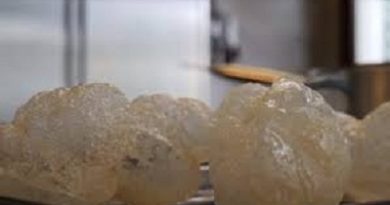Apple Cider Vinegar: Uses, Benefits and Side Effects
Apple cider vinegar has become a popular health trend in Nigeria. It is one of the top natural health remedies used to treat everything from beauty to health.
Vinegar may help with a range of health issues as suggested by some evidence but scientists need to carry out more research to confirm and understand these findings.
Table of Contents
What Is Apple Cider Vinegar?
Apple cider vinegar, known as cider vinegar or ACV, is a type of vinegar made out of cider or fresh, ripe, high-quality apples.
These apples are fermented and passed through a laborious process to develop the final vinegar. It has a pale to medium amber color.
Since it is made of fermented apples, it is not a great smelling product. So, be warned of its pungent smell.
Apple Cider Vinegar Uses
Apple Cider Vinegar (ACV) is also known as “the miracle liquid” or “the magic potion”; it is a common ingredient found in the kitchen and it is used as a natural remedy in a lot of health problems.
Please Read: 14 Health Benefits of Pepper Fruits
The best way to combine apple cider vinegar diet into your meal is to use it in your baking — for salad dressings, cooking, homemade mayonnaise and as a preservative.
A number of people also like to dilute apple cider vin in water and drink it as a beverage. Apple cider vin drink should be taken a few teaspoons per day, and never consume it without diluting it with water or juice to avoid side effects.
Types of Apple Cider Vinegar
ACV is of two popular types namely:
Organic Apple Cider Vinegar: also called non-pasteurized, unfiltered, or raw apple cider vinegar. It is made from apples that are allowed to ferment naturally without heat. The organic variety is not processed or refined. It has a cloudy appearance because of the presence of apple cider vinegar mother. The apple cider vinegar mother which has a cobweb-like appearance is a colony of bacteria which is gut-friendly and is often considered the most nutritious part of the apple cider.
Commercial Apple Cider Vinegar: This type of vinegar is less nutritious as it goes through a pasteurization process in which the vinegar is heated and filtered and sediments are removed if any. It also has a clear, amber appearance as the apple cider vinegar with mother is removed.
Apple Cider Vinegar Benefits
The health benefits of apple vinegar are many. It can alleviate cold symptoms, control high cholesterol, control acne, and help you to lose weight.
Apple cider vinegar with honey can be used for weak bones-osteoporosis, leg cramps, and pains, stomach upset, and sore throats.
Apple cider vin alleviates sinus problems, high blood pressure, arthritis, to help rid the body of toxins, stimulate thinking, slow the aging process, regulate blood pressure, reduce cholesterol, and fight infection.
The acidity of apple cider vinegar changes the pH of your scalp and makes it hard for the yeast to grow. If you have been fighting dandruff for a while and you are not sure what to use to get rid of those annoying freckles, look no more.
How to Make Apple Cider Vinegar
Apple cider vinegar weight loss is an all-natural product that has nearly countless uses. By knowing the right ratios and how long you need to let your vinegar ferment, you can save money by turning apples into vinegar with ease. No more Bragg organic raw apple cider vinegar.
INGREDIENTS
– 2 red big Apples
– 3 teaspoons sugar
– 1 empty bottle
– Water (enough to cover the apples)
PROCEDURE
1. Choose 2 red quality apples and wash them thoroughly in cold water.
2. Cut the apples into small cubes, don’t remove the peel.
3. Put the apples in a clean glass jar.
4. Add sugar, top it with water, and make sure the water covers the apples completely.
5. Use cheesecloth to cover the bottle and hold the cheesecloth with a rubber band around the bottle.
Fermenting Your Vinegar
- First, keep the jar in a warm, dark place.
- Secondly, stir the mixture once or twice a day
- Then, wait for the apples for 2-3 weeks or to sink to the bottom of the jar.
- Next, strain the apples from the cider and pour the cider back into the jar. Cover it again (same paper or cheesecloth).
- After that, return the liquid to the same jar. put the jar to the same warm, dark place and leave it to do its thing for roughly 4 to 6 weeks
- This is where the apple cider will begin to turn into apple cider vinegar. Stir the jar every 3 to 4 days, just to move the cider vinegar around a little as it ferments.
- After the first 4 weeks, you can begin to also taste your vinegar and once it reaches an acidity you like, you can actually transfer it to a bottle with a lid and begin using it.
- Lastly, transfer the completely fermented ACV into smaller containers if you want to. Cover them and store in the refrigerator for prolonged freshness.




Pingback: Ginger Weight Loss Tea - Benefits, Uses, and Side Effects - 9jafoods
Pingback: Detox Water for Weight Loss & Flat Belly - 9jafoods